He says…
By Terisa Folaron

On January 27, 1945, Soviet troops liberated Auschwitz, the largest and most notorious of the Nazi concentration and extermination camps. On the same date in 2007, the United Nations will commemorate the first International Holocaust Remembrance Day, though the unanimous approval of the General Assembly’s resolution didn’t come without concerns regarding the remembrance of other genocides. The reservations of some Assembly members were most aptly summarized by Maged A. Abdelaziz, the Egyptian ambassador, who stated “No one has a monopoly on suffering.”
It is a point well-made. Ongoing acts of genocide are still being reported in Darfur, Sudan, and the recent Review of the Holocaust Global Vision Conference in Iran set out specifically to debunk the substantive fact of the Nazi genocide during World War II. And with violent and hate crimes on the rise in Milwaukee and recent reports chronicling Milwaukee’s poor race relations, January seems the perfect month to reflect on the impact of past hate and violence as a cautionary tale for today.
Albert Beder wore a yellow star on his chest. He survived the Holocaust, and his story reminds us of the strength of the human spirit.
Albert was born in Kovno, Lithuania (now Kaunas) on June 13, 1928. Albert lived through death marches, diphtheria, overcrowded ghettos and forced labor camps. He was just 13 years old when he was placed into his first ghetto internment camp.
He says, I had a family. I had two older brothers, two older sisters, one younger sister. I had a mother and a father.

Albert was in a summer youth camp near the occupied East Prussia/Lithuanian border when his family, still in Kovno, attempted to flee from the advancing Nazis. “They managed to get maybe 30 kilometers before the Germans caught up with them. But they lost my little sister Reva on the road. She was 6 years old. There were many families running and trying to escape. Planes were shooting at them.”
The Germans collected Albert, along with the other Jewish youth in the camp, and, like his family, he was returned to his Kovno family home, where Jewish citizens were preparing for their forced move into the Kovno Ghetto.
“In Kovno, we received orders that all Jews had to move and had to live in that area that was fenced in with barbed wire. It was August, 1941. The consequence for not following these orders was the death penalty. You had to wear the star. If you did not, that was also the death penalty. Back then everything was the death penalty. They let us take everything into the ghetto. We didn’t know in the end it wouldn’t matter. Twice, as we were preparing to move, soldiers came looking for my father to send us to Ninth Fort. We knew there were lots of killings there. They came to the door and asked for my father. My mother would say, ‘He is sick and cannot come to the door.’ She offered them silk stockings and soap to buy them off. The Ghetto was crowded. We ended up in a small schoolhouse with 100-150 other families. We had to leave our furniture out in the schoolyard. In the Ghetto I met Howard. He was 9 years old. I was 13. I knew his older sister in school.”
At its height, the Kovno Ghetto interned nearly 30,000 prisoners. Over 5,000 Kovno residents were taken to Ninth Fort, also known as “Death Fort,” and executed.
He says, There was an old story in Lithuania. Jews needed Christian blood to make their Matzah. There were a lot of illiterate people then and this story was told over and over. But how could that be? Blood is red. Matzah is white. Where did the red go? If you say something and you start to believe it, anything can turn colors.
“In October of 1942, we were told we could take what we could carry out. But by that time there was not much left to take. We were sent to an Arbeitslager (a labor camp). In the beginning, Riga was better than Kovno. The Lithuanian Air Force was still in control, but soon the SS took over and quickly turned it into a real concentration camp. I could still see my mother and father after work hours. But everything changed. You had to stand in the cold with your hats off for a very long time during Appell. It was in Riga that we heard from other Jews that my little sister was still alive. My mother was happy. There were so many causalities. In Riga they sent my father to Kaiserwald. He was 50 years old and died there. In March of 1944, Kinderaktion came to Riga. They took all children under 12 years old. I was 16 and Howard was 13.”
The literal translation of the German word Appell means “to appeal.” The Appell, or Roll Call, could last hours or days. Many prisoners, already weakened by starvation, disease and physical distress, could not endure the long hours of standing. The Riga Ghetto, located in Latvia, experienced two mass liquidations. A total of 24,000 of its occupants were taken by train to the nearby Rumbula Forest. During the winter executions, prisoners were ordered to remove their clothes and then were promptly executed along the edges of mass graves. Prisoners sent to Kaiserwald, a work camp near Riga, labored for large German manufacturers producing electrical and mined goods. Although Kinderaktion, or “Children Death by Action,” preyed on the young, the elderly and sick were often included due to their feebleness and inability to work. As the warfront gained ground, Riga inmates were marched to temporary camps until they reached transports to take them to the Stutthof concentration camp in Poland.
Camp prisoners were often forced to wear differentiating patches: green for criminals, purple for Jehovah Witnesses, pink for homosexuals. Survivor testimony suggests the yellow star made it easier for Nazis who were ordered to shoot Jews on sight. From Stutthof, Albert was transported to Camp Ten – a satellite camp of the Dachau concentration camp in Germany. There they were forced to build barracks and construct parts for an underground airfield before being taken to Dachau’s main camp near Munich. The SS training camp of Dachau was infamous for its cruel medical experimentation. More than 28,000 died within its walls.
“We walked through the iron gate. It read, “Arbeit Macht Frei” (Work Will Set You Free). At Dachau, they gave us showers and a piece of bread. We got new stripes. Our old ones were eight months old and full of lice. There was a man with us who took his time eating his small bread. Another prisoner saw him and came like an eagle and took it from him. It was very sad. It is hard to explain what a small piece of bread was worth back then. I weighed 70 or 80 pounds.”
“At Dachau, we saw the dead bodies. They were there on the sides of buildings. So many bodies, but there was no one to load them. The next morning we were told to go to the gates. We were given half a loaf of bread and a tin can of German meat! We could not believe it! It was a beef stew in thick gravy. I don’t remember how we opened the cans. We had nothing. It was very good. They didn’t tell us the food was supposed to last for 10 days. For 10 days they marched us. We were forced to carry the SS rucksacks. Lots of people did not make it. If you fell behind you were shot. Howard and I walked together. Sometimes we lost each other but then found each other again. Howard found a dead horse. They picked the dead horse apart until there was nothing left. We ate the raw meat. Many of us were already sick…”
He says, People ask, Why did you not fight back?
He says, They had guns. We had nothing. They had everything.
“On the tenth day they marched us down into a natural ravine. At that time we were okay with death. Howard was 13 and I was 17. We could see the end of the war coming. Some never knew an end was coming. The SS surrounded the ravine with their machine guns. We figured we would be shot or be buried alive under those that were shot. The next day we were ordered out of the ravine and were taken to a large field. There were about 2,000 of us, mostly men. The Germans demanded another Appell. At night we were ordered to lie down. In the morning we awoke covered in snow and the Germans were gone. They had just disappeared.”
Albert Beder and Howard made their way with others who had survived the cold night to a neighboring farming community with the assistance of two uniformed German soldiers who had elected to stay behind. The villagers made the survivors oatmeal soup. The next day American tanks rolled through. Of the 37,000 Jews originally from Kovno, only 3,000 survived.
Albert was transferred through a series of hospitals, and with financial assistance from Jewish Family Services, was sent to New York. In 1947, Albert began his life in Milwaukee. Three years later, he was drafted by the United States Army for the Korean War. In 1952, the Army sent Albert back to Germany where he worked at a German Youth center. He promoted tolerance and diversity in an attempt to create a more positive image of Americans in the minds of young Germans.
In 1988, Albert returned to Europe to visit the internment camps. He has given talks about his experiences to high school and college audiences. He acknowledges that Milwaukee is a segregated city, prone to hate crimes and violence. He wants to believe the hate is not as pervasive as we may perceive it to be. He warns us to be cautious, as hate can bring with it many things for which we are wholly unprepared. He encourages us to deal with intolerance while it is still in our backyards. He avers that the greatest joys in his life are his wife, his family and the chance to live life over again.
He says, The Holocaust is a story that needs to be told. I imagine my grandmother, and I imagine her in a place where they killed 10,000. They would have wanted their story known.
VS


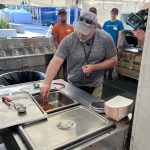
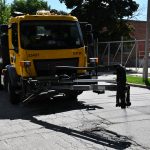
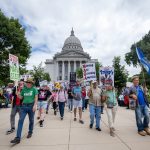
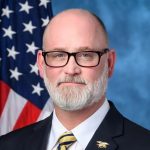
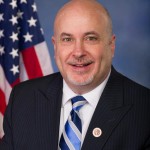



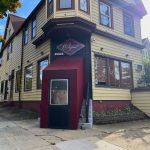
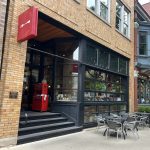



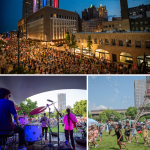




Last week I got the opportunity to personally meet and talk to both Al and Howard when they were guest speakers at the middle school our 2 youngest attend. Their story can only be described as heartbreaking. After spending time with both of them after their presentation, I can only say that they are a couple of the sweetest men I ever had the chance to meet. To anyone else, if you ever have an opportunity such as this…do it. It’s one thing to read about these types of stories but another to actually see the emotions in their eyes as they relive those horrors so that maybe, someday humanity will get a clue and learn from the past.